Two insect species were used in a laboratory experiment. For one treatment, both species were grown by themselves (in separate chambers) on a suitable food source. For the second treatment, the two species were grown together (in the same chamber) on the same type and amount of food as in the first treatment. The given figure shows the results (the number of individuals of each species in the two treatments) at the end of the experiment. Based on these results the two species should be classified as:



Important Questions on Organisms and Populations
To determine the effect of intra-specific competition on the growth of saplings of Eucalyptus dives, an experiment was designed in which two set of pots were used. In the first set only 1 sapling was planted per pot, and in the other set 16 sapling were planted per pot. To check for the effect of intra- specific competition of resources, a decreasing amount of water was added to each set, The results have been graphically indicated below. Which of the following conclusions can be best drawn from the study?
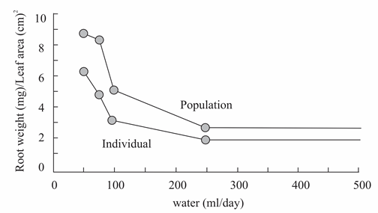
The relationship between population density and population growth rate in a certain animal species is shown below.
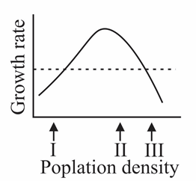
Choose from the following graphs, the appropriate population growth patterns that would be obtained if the population is at the densities (I, II, III) shown in the graph above. [Note: The y-axis in A to D is relative density that cannot be compared to the absolute density in the figure.]
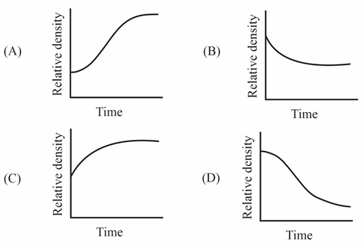
The figure below depicts life-history strategies for three plant species ( and ) along axes: strength of competition with other organisms, level of disturbance in the habitat, and level of environmental stress in the habitat. Species a grows in habitats where competition among species is high but disturbance and stress are low. Species grows in habitats with high environmental stress but with low interspecies competition. Species grows in highly disturbed habitats with low environmental stress.
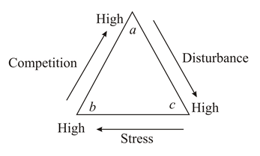
Which of the statements below is/are correct?
I. Characteristics of "a-type" plants are faster growth rate and short-lived leaves.
II. Desert annual plants are " b-type" species. They have rapid growth and produce large amount of seeds in a short time after rains.
III. Most plants belonging to "c-type" species would be herbaceous while a-type" and " b-types" species are likely to be trees or shrubs.
Island biogeography theory states that the number of species on an island is determined by immigration rates of new species to the island and extinction rates of species on the island. Immigration rates to an island decline as its distance from the mainland increases and extinction rates decrease with increasing island size. When the immigration and extinction rates on an island are equal, the number of species on the island reaches equilibrium.
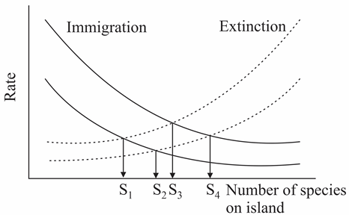
Which of the following gives the correct combination of distance (near and far) and area (small and large) of islands where species occur?
